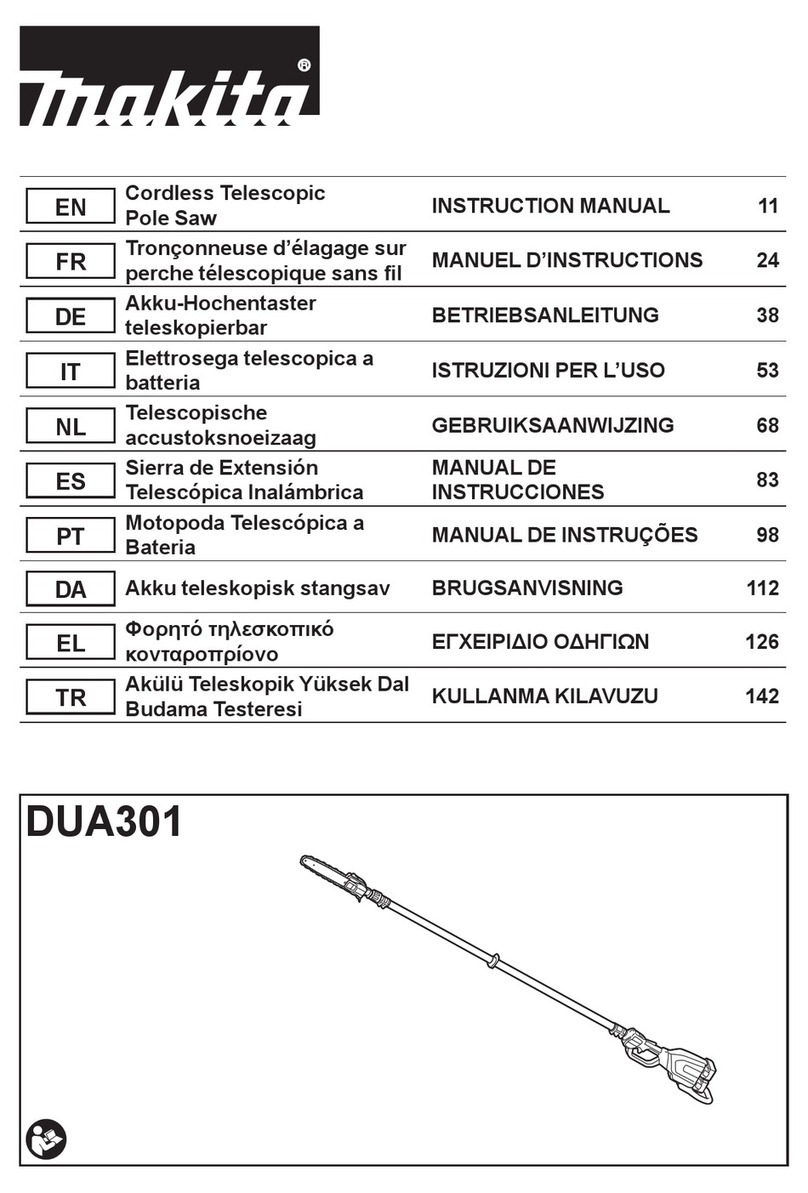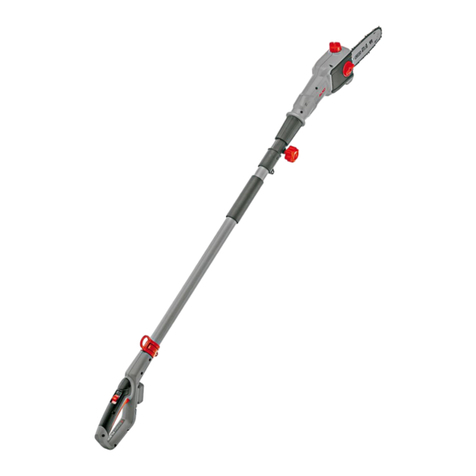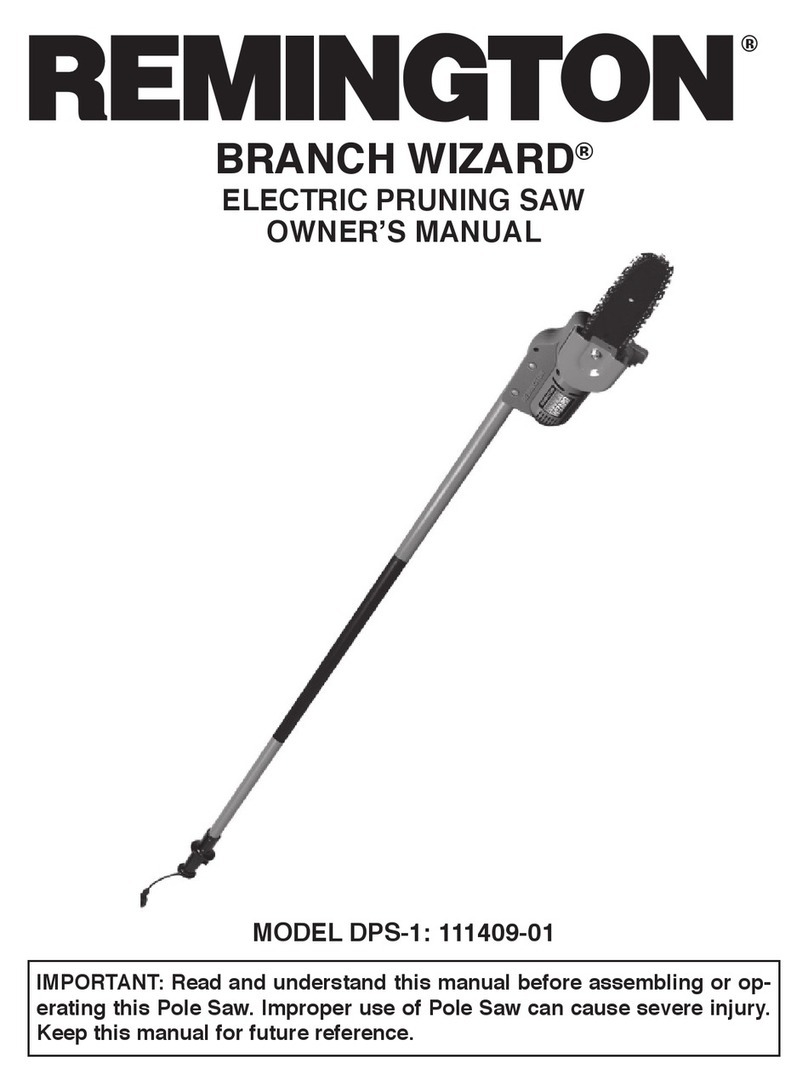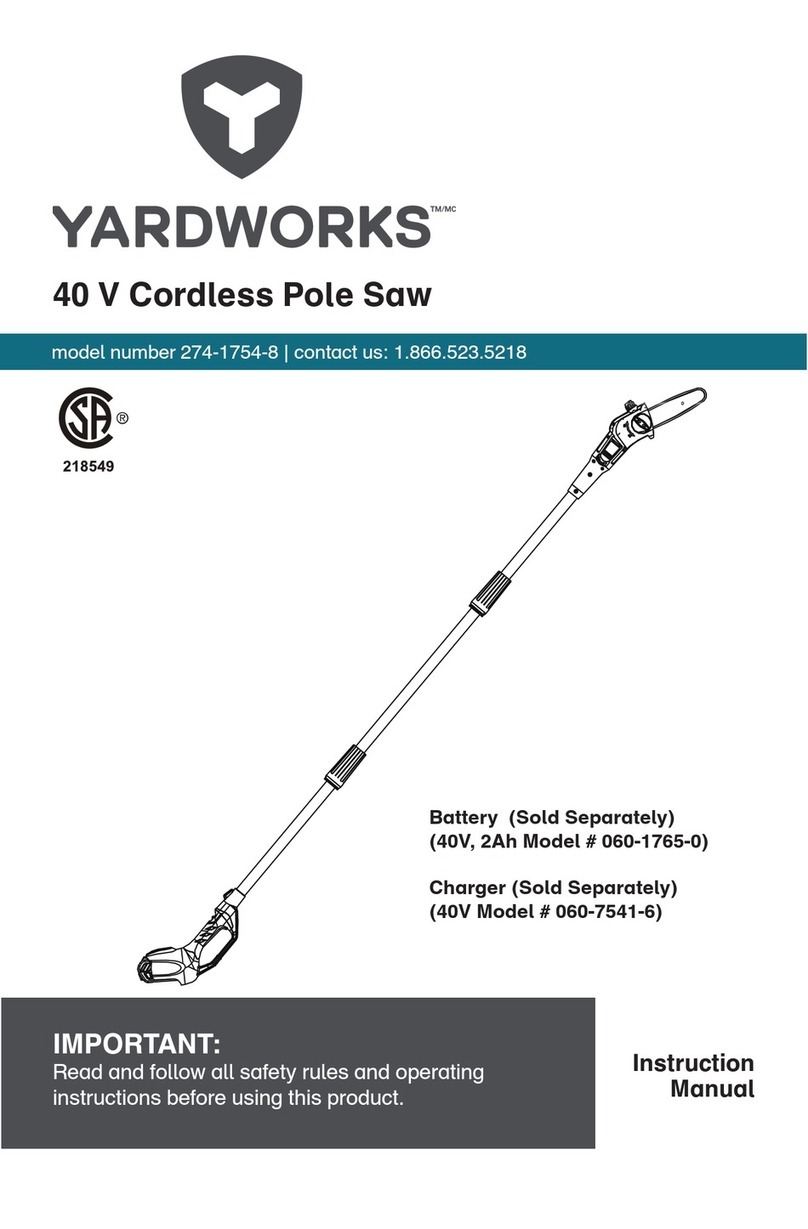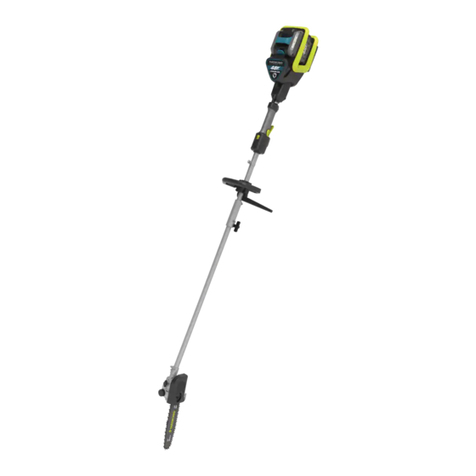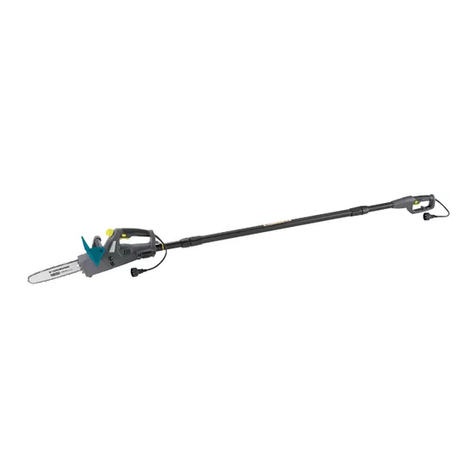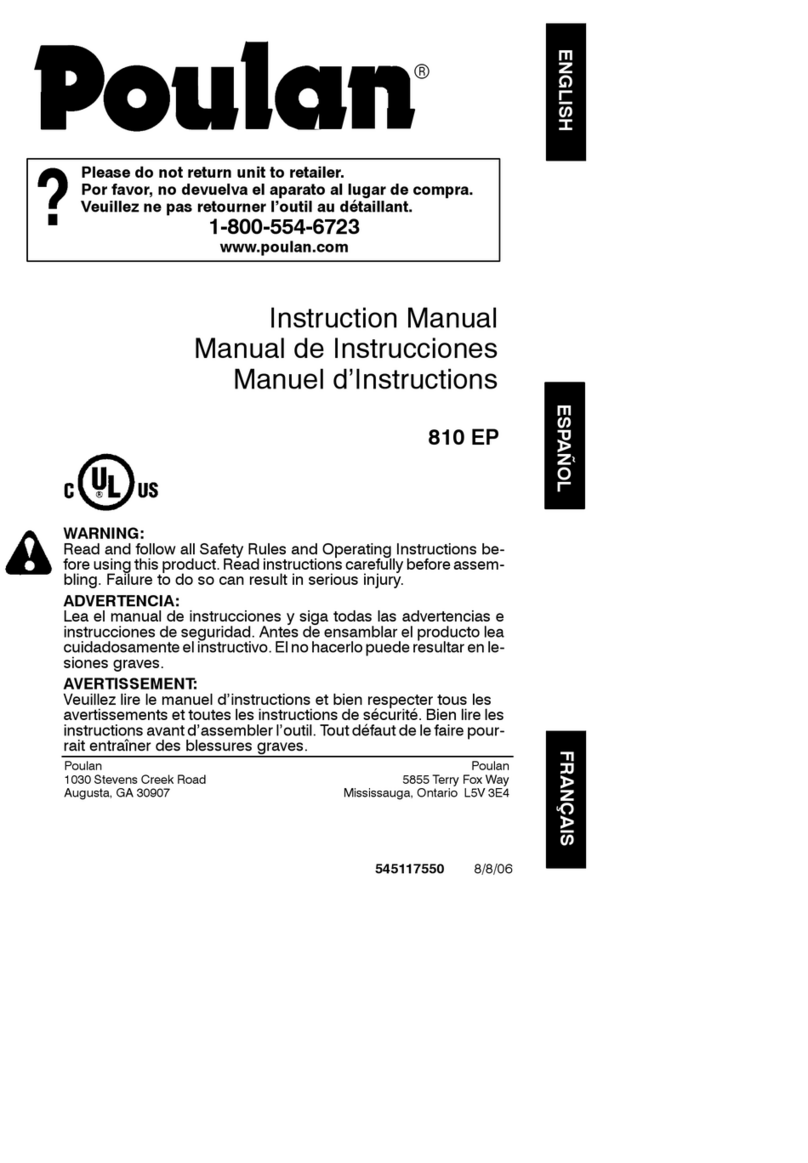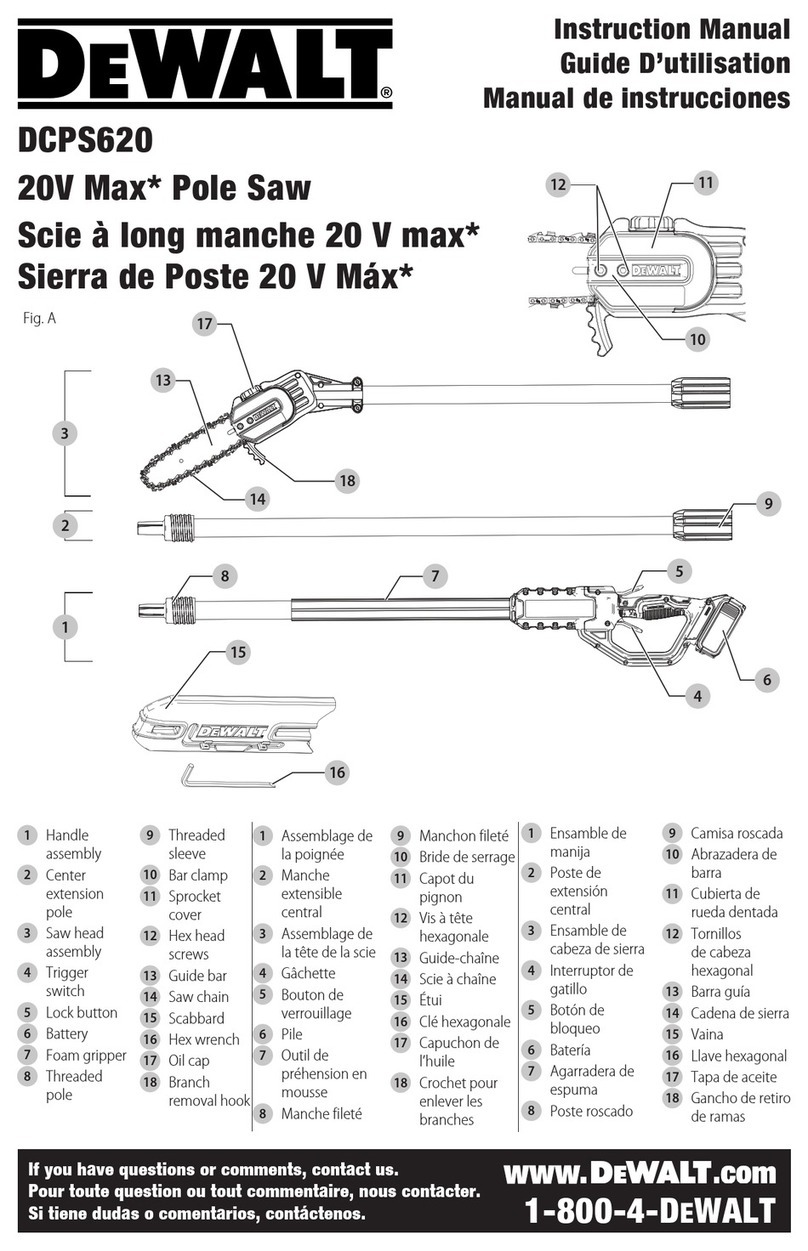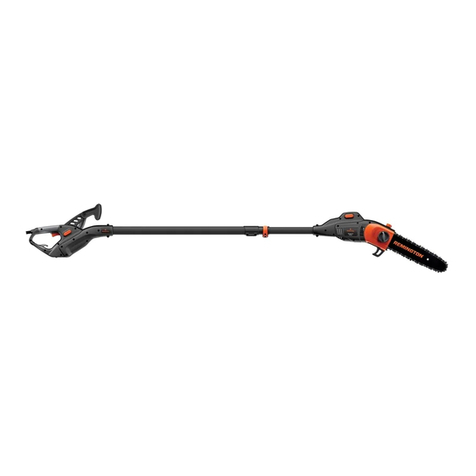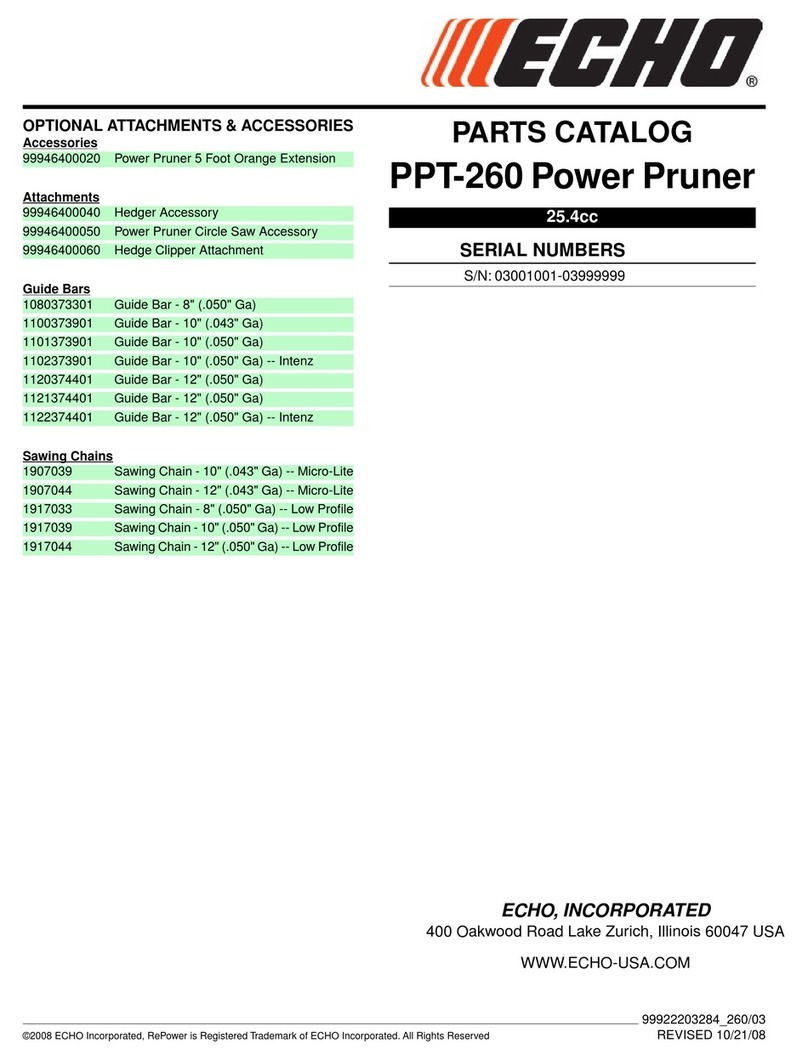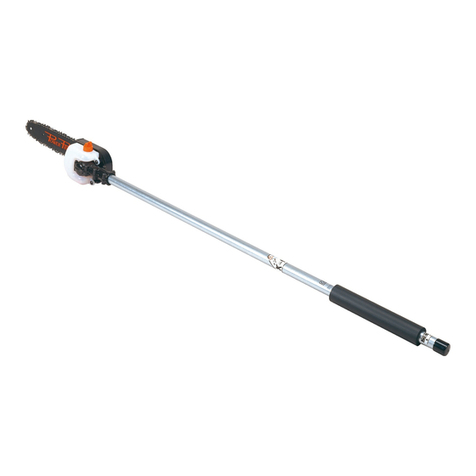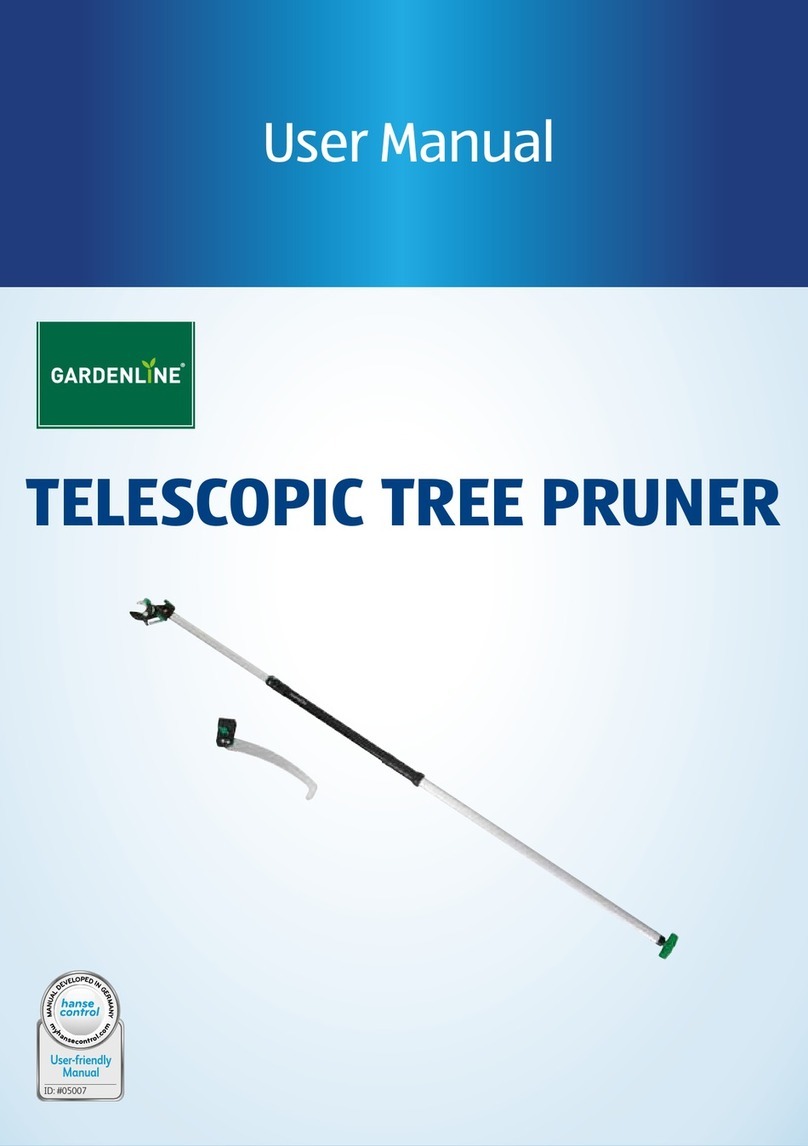3
LPS40820-1
GENERAL POWER TOOL SAFETY WARNINGS
• Disconnect the plug from the power source and/or the
battery pack from the power tool before making any
adjustments, changing accessories, or storing power
tools. Such preventive safety measures reduce the risk of
starting the power tool accidentally.
• Store idle power tools out of the reach of children and
do not allow persons unfamiliar with the power tool or
these instructions to operate the power tool. Power
tools are dangerous in the hands of untrained users.
• Maintain power tools. Check for misalignment or
binding of moving parts, breakage of parts and any
other condition that may affect the power tool’s
operation. If damaged, have the power tool repaired
before use. Many accidents are caused by poorly
maintained power tools.
• Keep cutting tools sharp and clean. Properly
maintained cutting tools with sharp cutting edges are less
likely to bind and are easier to control.
• Use the power tool, accessories and tool bits etc. in
accordance with these instructions, taking into
account the working conditions and the work to be
performed. Use of the power tool for operations different
from those intended could result in a hazardous situation.
Battery tool use and care
• Recharge only with the charger specified by the
manufacturer. A charger that is suitable for one type of
battery pack may create a risk of fire when used with
another battery pack.
• Use power tools only with specifically designated
battery packs. Use of any other battery packs may
create a risk of injury and fire.
• When battery pack is not in use, keep it away from
other metal objects, like paper clips, coins, keys,
nails, screws or other small metal objects, that can
make a connection from one terminal to another.
Shorting the battery terminals together may cause burns
or a fire.
• Under abusive conditions, liquid may be ejected from
the battery; avoid contact. If contact accidentally
occurs, flush with water. If liquid contacts eyes, seek
medical help. Liquid ejected from the battery may cause
irritation or burns
Service
• Have your power tool serviced by a qualified repair
person using only identical replacement parts. This
will ensure that the safety of the power tool is
maintained.
• When servicing a power tool, use only identical
replacement parts. Follow instructions in the
Maintenance section of this manual. Use of
unauthorized parts or failure to follow Maintenance
instructions may create a risk of shock or injury.
AVOID DANGEROUS ENVIRONMENTS – Don’t use pole
saw in rain, damp or wet locations. Do not operate pole saw in
gaseous or explosive atmospheres. Motors in these tools
normally spark, and the sparks might ignite fumes.
DRESS PROPERLY – Don’t wear loose clothing or jewelry.
Wear protective hair covering to contain long hair. They can
be caught in moving parts. Use of rubber gloves and
substantial footwear is recommended when working outdoors.
USE SAFETY GLASSES –Wear safety glasses with side
shields or goggles that are marked to comply with ANSI Z87.1
standard when operating this product. Use face or dust mask
if environment is dusty.
DANGER: Risk of cut. Keep hands away from chain. Keep
both hands on pole and handle when power is on.
USE RIGHT APPLIANCE – Do not use appliance for any job
except that for which it is intended.
USE HEAD AND FACE PROTECTION: Wear a safety hard
hat with a full face shield that meets the ANSI Standards AN-
SI Z89.1, or CE Standards while operating the pole saw.
CAUTION: Never stand under the limb being trimmed.
Position yourself out of the way of falling debris.
REMOVE BATTERY FROM POLE SAW when not in use or
when servicing or cleaning. Do not leave unattended.
AVOID UNINTENTIONAL STARTING— Don’t carry the pole
saw with finger on switch, Be sure the switch is off when
installing battery pack.
CAUTION: Never carry pole saw with one hand, Doing so
could cause saw to become unbalanced and damage may
occur. Failure to heed this warning can result in serious
personal injury.
KEEP CHILDREN AWAY: All visitors, children and pets
should stay at a safe distance from the work area.
STORE IDLE POLE SAW INDOORS: When not in use, the
pole saw should be stored indoors in a dry and high or
locked-up place, out of reach of children.
DO NOT ATTEMPT to remove cut material or hold material to
be cut when pole saw is on and the chain is moving. Make
sure switch is off when clearing jammed material from the
chain, Do not grasp the exposed cutting edges when picking
up or holding the saw. Keep all parts of the body away from
the saw chain.
CAUTION: Chain coasts after pole saw is turned off.
WARNING: To protect yourself from electrocution maintain a
min of 50ft (15m) from overhead electrical likes.
DO NOT FORCE POLE SAW—It will do the job better and
with less likelihood of a risk of injury at the rate for which it
was designed.
GENERAL SAFETY



